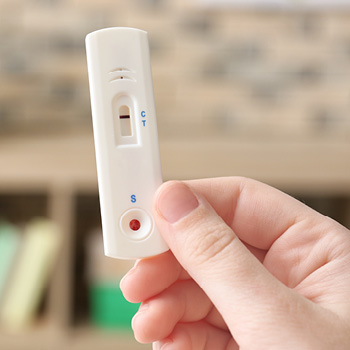Lateral flow assays are one of the many types of immunoassays available for health monitoring. As point of care diagnostic tests, they provide simple “yes or no” answers for rapid and accurate disease surveillance.
Lateral flow assays (LFAs) can be used to test for antibodies throughout the immune response. Monitoring specific antibody isotypes allows clinicians to see if the patient is in the initial infection stage or has developed antibodies, suggesting immunity against the disease. Combined with controls, LFAs have the potential to provide robust results, but with the added benefit of simple “yes or no” results in a rapid format.
Why use a Lateral flow test?
Like other serological tests, LFAs can identify antibodies or antigens in a sample of blood serum or another bodily fluid. They may also be used to detect allergy.
Why antibody test?
The antibody-based LFA test can provide rapid and unambiguous results at the point of care. Almost instant results can provide reassurance and allow immediate action. Rapid results are particularly important for healthcare and key workers needing to assess exposure for a safe working environment.
How does a Lateral flow assay work?
Like any serological immunoassay, the key principle is that the infectious agent/pathogenic antigen is attached to a surface, either directly or using a capture antibody. However, the process uses capillary action to “flow” the biological sample across a solid matrix allowing the reactant antibodies to bind to the antigen and be visualized with a secondary antibody conjugated to a reporter molecule such as a 40nm Gold molecule.



